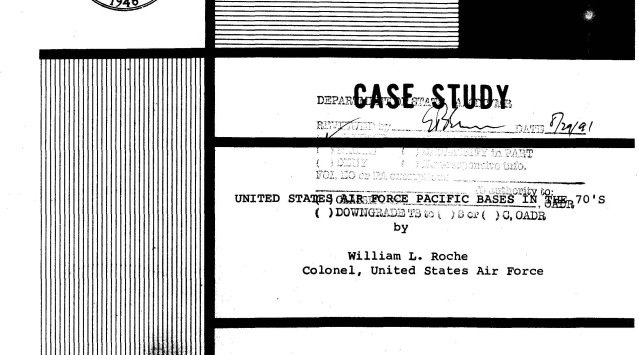Author/Editor: William L. Roche
Publisher/Sponsor: Foreign Service Institute
Supplier: Department of State
Report Date: April 1971
Classification: Declassified
Click here to read the full report.
Description:
The Nixon Doctrine of 1969 declared that the United States would maintain all its treaty commitments in Asia and would provide adequate forces in order to assist the area in efforts to provide their own security. This new directive would eventually decrease the presence of military forces in the area as the Asia-Pacific nations developed their own national defense forces. The Nixon administration also sought to normalize relations with Communist China, complicating relations with other Asian nations, especially Taiwan and Japan. The shift in U.S. bilateral relations with East Asia created a delicate atmosphere in which military operations and commitments in the area were to be continually and closely scrutinized.
This 1971 case study by Colonel William Roche explores the future role of U.S. air bases in the Pacific with regards to relations with the Republic of Korea, China, Japan (with emphasis on Okinawa) and the Philippines.
Roche states, “The current trend in the pacific, as elsewhere, is to reduce forces, economize and encourage other nations to assume a greater share of the defense burden. This is being accomplished by withdrawal of some units and consolidation of other units, utilizing the same facilities. It also requires continued military assistance to certain Asian allies for a number of years.” (page 10)
This report was released to the Nautilus Institute under the US Freedom of Information Act (FOIA).


